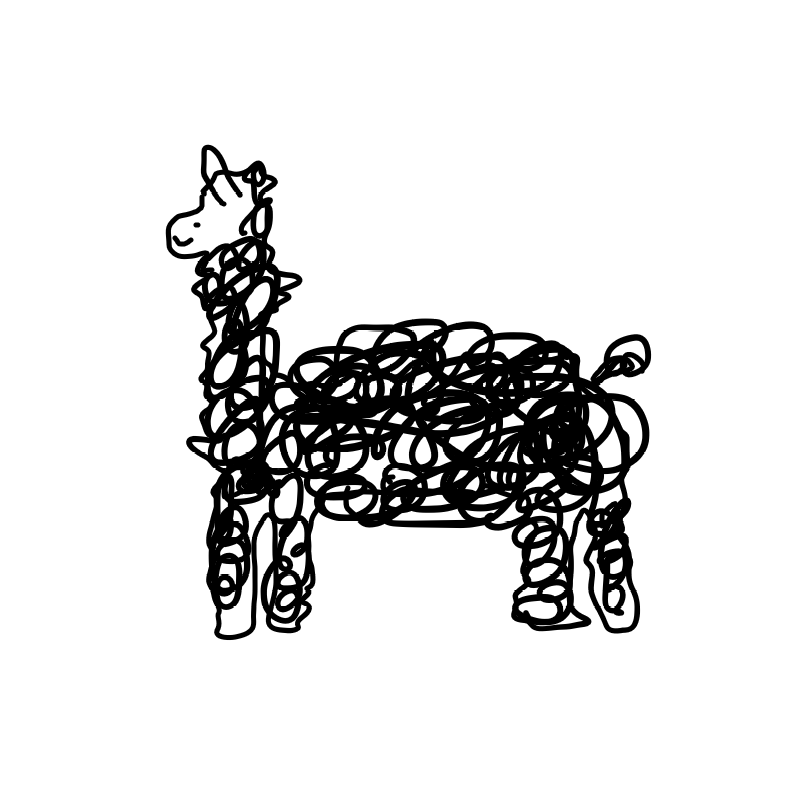463. Island Perimeter
You are given row x col grid representing a map where grid[i][j] = 1 represents land and grid[i][j] = 0 represents water.
Grid cells are connected horizontally/vertically (not diagonally). The grid is completely surrounded by water, and there is exactly one island (i.e., one or more connected land cells).
The island doesn't have "lakes", meaning the water inside isn't connected to the water around the island. One cell is a square with side length 1. The grid is rectangular, width and height don't exceed 100. Determine the perimeter of the island.
My Answer 1: Accepted (Runtime: 628 ms - 37.97% / Memory Usage: 17.9 MB - 14.51%)
class Solution:
def islandPerimeter(self, grid: List[List[int]]) -> int:
def func(grid, i, j):
if i < 0 or i > len(grid)-1 or j < 0 or j > len(grid[0])-1:
return
grid[i][j] = -1
a = 4
if i > 0 and grid[i-1][j] == 1:
a -= 1
func(grid, i-1, j)
elif i > 0 and grid[i-1][j] == -1:
a -= 1
if i < len(grid)-1 and grid[i+1][j] == 1:
a -= 1
func(grid, i+1, j)
elif i < len(grid)-1 and grid[i+1][j] == -1:
a -= 1
if j > 0 and grid[i][j-1] == 1:
a -= 1
func(grid, i, j-1)
elif j > 0 and grid[i][j-1] == -1:
a -= 1
if j < len(grid[0])-1 and grid[i][j+1] == 1:
a -= 1
func(grid, i, j+1)
elif j < len(grid[0])-1 and grid[i][j+1] == -1:
a -= 1
self.ans += a
self.ans = 0
for i in range(len(grid)):
for j in range(len(grid[0])):
if grid[i][j] == 1:
func(grid, i, j)
return self.ans1 인 값부터 재귀로 island 찾아줌
지나간 곳은 -1 로 바꿔주기
사각형이니까 a = 4 로 시작해서
사방 중에 1 이 있는 곳은 연결되는 곳이니까 a - 1 해주고 재귀로 넘어감
사방 중에 -1 이 있는 곳도 연결되는 곳이니까 a - 1 but 재귀로 넘어가진 X
모두 더해주면 끗~
143. Reorder List
You are given the head of a singly linked-list. The list can be represented as:
L0 → L1 → … → Ln - 1 → Ln
Reorder the list to be on the following form:
L0 → Ln → L1 → Ln - 1 → L2 → Ln - 2 → …
You may not modify the values in the list's nodes. Only nodes themselves may be changed.
My Answer 1: Time Limit Exceeded (10 / 12 test cases passed.)
# Definition for singly-linked list.
# class ListNode:
# def __init__(self, val=0, next=None):
# self.val = val
# self.next = next
class Solution:
def reorderList(self, head: ListNode) -> None:
"""
Do not return anything, modify head in-place instead.
"""
while head.next:
last = head
while last.next and last.next.next:
last = last.next
if last == head:
break
tmp = head.next
head.next = last.next
last.next = None
head = head.next
head.next = tmp
head = head.nextlast: 마지막 노드의 바로 전 노드를 가리킴
마지막 노드는 last.next 가 됨
없으면 break
있으면 head 와 head.next 사이에 넣어주기
last.next 는 자리를 찾아갔으니까 None 으로
head 는 두칸 앞으로 가기
개수 다시 계산하기 귀찮읍니다...
Solution 1: Accepted (Runtime: 88 ms - 86.45% / Memory Usage: 23.3 MB - 77.22%)
# Definition for singly-linked list.
# class ListNode:
# def __init__(self, val=0, next=None):
# self.val = val
# self.next = next
class Solution:
def reorderList(self, head: ListNode) -> None:
"""
Do not return anything, modify head in-place instead.
"""
#step 1: find middle
if not head: return []
slow, fast = head, head
while fast.next and fast.next.next:
slow = slow.next
fast = fast.next.next
#step 2: reverse second half
prev, curr = None, slow.next
while curr:
nextt = curr.next
curr.next = prev
prev = curr
curr = nextt
slow.next = None
#step 3: merge lists
head1, head2 = head, prev
while head2:
nextt = head1.next
head1.next = head2
head1 = head2
head2 = nextt-
중간 값 찾아주기
=>slow는 1 칸씩 가고fast는 2 칸씩 감
=> 최종적으로slow가 middle 값 -
오른쪽 절반을 reverse
=>prev,curr,nextt세개로 reverse
=>prev는 reverse 된 오른쪽 절반이 됨 -
head와prev합치기
133. Clone Graph
Given a reference of a node in a connected undirected graph.
Return a deep copy (clone) of the graph.
Each node in the graph contains a value (int) and a list (List[Node]) of its neighbors.
class Node {
public int val;
public List<Node> neighbors;
}Solution 1: Accepted (Runtime: 40 ms - 55.53% / Memory Usage: 14.7 MB - 55.68%)
"""
# Definition for a Node.
class Node:
def __init__(self, val = 0, neighbors = None):
self.val = val
self.neighbors = neighbors if neighbors is not None else []
"""
class Solution:
def cloneGraph(self, node: 'Node') -> 'Node':
if not node:
return node
m = {node: Node(node.val)}
stack = [node]
while stack:
n = stack.pop()
for neigh in n.neighbors:
if neigh not in m:
stack.append(neigh)
m[neigh] = Node(neigh.val)
m[n].neighbors.append(m[neigh])
return m[node]DFS iteratively
stack 을 이용해서 노드를 하나씩 보면서
m[n].neighbors 에 이웃들 넣어주기...?
